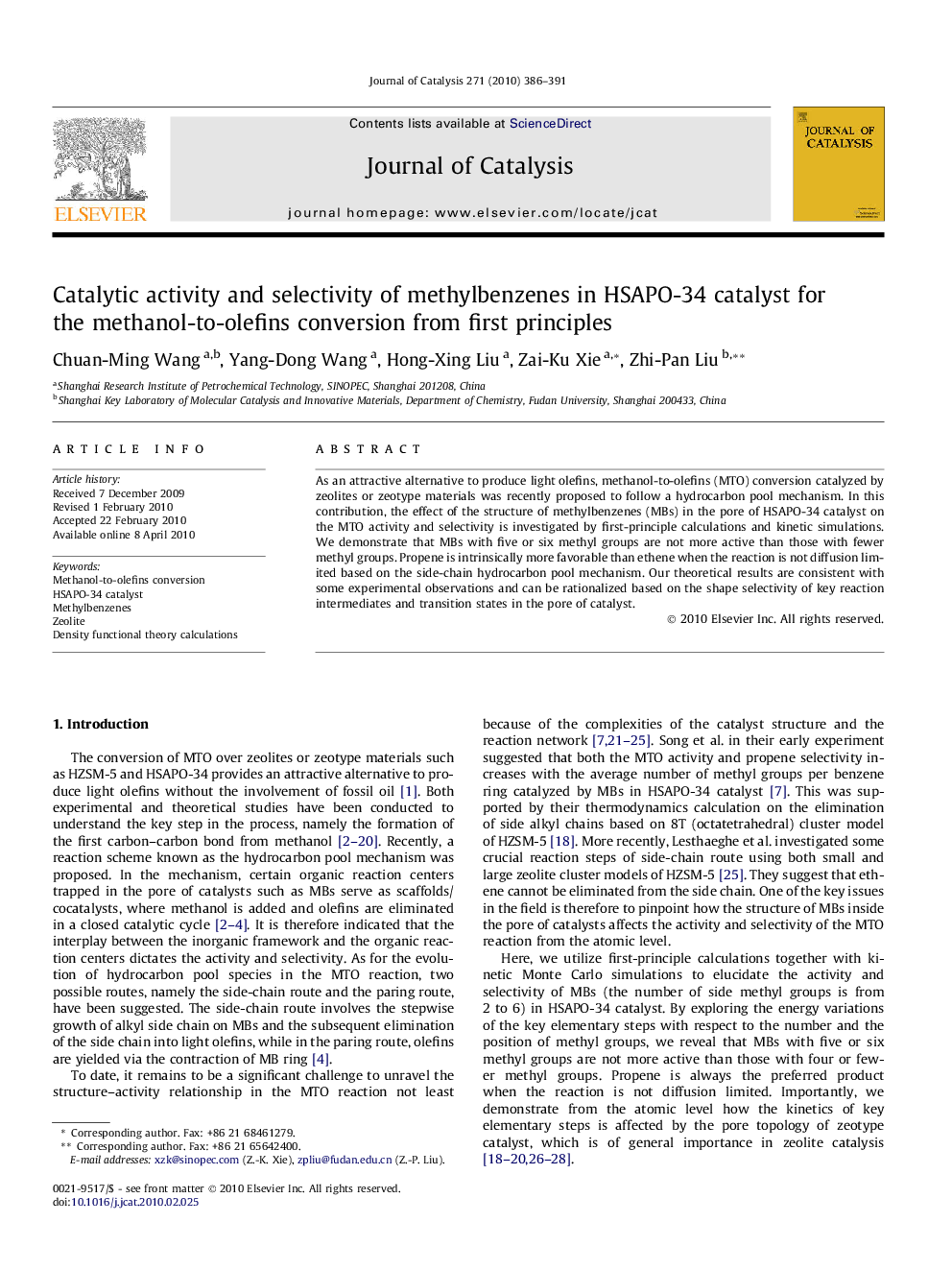| Article ID | Journal | Published Year | Pages | File Type |
|---|---|---|---|---|
| 61791 | Journal of Catalysis | 2010 | 6 Pages |
As an attractive alternative to produce light olefins, methanol-to-olefins (MTO) conversion catalyzed by zeolites or zeotype materials was recently proposed to follow a hydrocarbon pool mechanism. In this contribution, the effect of the structure of methylbenzenes (MBs) in the pore of HSAPO-34 catalyst on the MTO activity and selectivity is investigated by first-principle calculations and kinetic simulations. We demonstrate that MBs with five or six methyl groups are not more active than those with fewer methyl groups. Propene is intrinsically more favorable than ethene when the reaction is not diffusion limited based on the side-chain hydrocarbon pool mechanism. Our theoretical results are consistent with some experimental observations and can be rationalized based on the shape selectivity of key reaction intermediates and transition states in the pore of catalyst.
Graphical abstractTheoretical calculations on the methanol-to-olefins conversion in HSAPO-34 reveal that hexamethylbenzene and pentamethylbenzene are not more active than methylbenzenes with fewer methyl groups, and propene is the favored product.Figure optionsDownload full-size imageDownload high-quality image (35 K)Download as PowerPoint slide
